|
Often here in the Power House the focus is strength. More often than not it is placed around one particular lift. Weather
it is the deadlift, bench press, squat, or some type of Olympic lift, The goal should always be about improving overall power
and strength. Since the main goal is always to improve strength and power, it is important to make sure you are applying the
right methods to help you achieve your main goal. By not just focusing on the lift, but looking at developing a total program,
not only are you improving your big lifts but you are also helping build a solid training program for your goals. Today we are going to examine a few principles that should be applied when trying to build a larger squat.
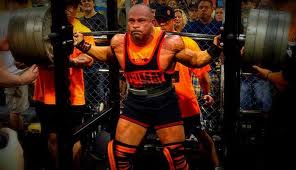
Laying the ground work-
The squat is often called the king of all the leg lifts but the squat is actually so much more. Really good squatters not only have strong legs, but also have incredibly strong glutes and back muscles.
They are explosive, flexible, and have really good tendon strength. All of these
things factor into squatting. By simply looking at some of these areas a pretty
solid squat max can be built. Another major benefit is a solid total squat program can be built. When trying to build a total
program you should focus on more than “getting in the rack”. Five areas that should be looked at when developing
a squat program are:
· Muscle
and CNS Strength
· Tendon
Strength
· Building
Weak Links
· Explosiveness
· Increasing
Mobility
By looking at these five areas and taking aim to improve them, you will be taking a well rounded approach to increasing
your squat numbers. Now let’s take an even closer look at the five different squat building areas.
Muscle vs. CNS Strength- There is a funny train of thought in powerlifting that anything over five reps is considered high reps. The main focus
of training should be about strength development. That means a lot of very heavy weight being lifted for low reps. High weight
low rep type of training works the CNS (central nervous system) a lot. By placing more emphasis on the CNS, more muscles can
be recruited for overall power. While heavy loads/ low reps are great for developing the CNS for strength training, it is
not the best range for building leg mass. Since strength development is more about CNS building rather than muscle building
higher rep ranges are more beneficial to developing muscle hypertrophy than CNS development. Bodybuilders tend to train in
a higher rep range and have bigger legs than most powerlifters. Powerlifters
tend to train in a much lower rep range than bodybuilders but also tend to be stronger when it comes to maxing out.
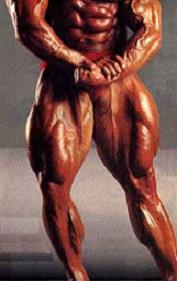
When trying to get your squat totals up focus more on a rep range that gives the best CNS development. You should
train for heavy weight and low reps. Does this mean that you should get rid of all higher rep training? Not exactly. While
the goal has nothing to do with building big muscles, bigger muscles can be beneficial for squatting. Bigger legs take up
more surface area. This will in turn add more support, stability, and joint strength for squatting. A little leg size will
be beneficial but you should still keep hypertrophy training to a minimal. If you wanted o do some hypertrophy
work, once a week a person could do 3-4 sets of 8-12 reps as auxiliary work in their program. While a little taste of hypertrophy
is nice every once in a while, be sure to make your main meals off of heavy weight low rep training.
Tendon Strength-
Another area to look for building a squat program is tendon strength. Heavy weight/low rep training is not the easiest
thing on a person’s joint and tendons. Since that is the case, one area to work on is developing tendon strength. Tendon
strength is extremely important in the aspect that tendons transmit force from muscles to bones so movement can happen. When tendons are strengthened they become stronger and larger. The increased size
and strength makes them more able to hold up under pressure and tension, a pretty important thing when there are hundreds
of pounds on your back pushing you down.
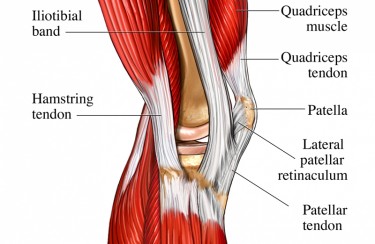
There are two very good ways of developing tendon strength. One method is thru submaximal loading. Submaximal loading
has a person use more than one hundred percent of their max weight in a limited range of motion. The shorter range of motion
always the tendons to hold up against loads that they would not or could not normally be put up against. Exercises like partial
deadlifts, or squats off of pins are two examples of good partial movements that strengthen the tendons. You want to perform
these in a rep range of 5 and under.
Tendons have very little in the way of blood supply so another good way of strengthening them is filling them full of
blood. The blood helps pump the tendons up. A fuller pumped up tendon equals a stronger tendon. One of the best ways to load
a muscle full of blood is thru ultra high reps. When I say ultra high reps, I don’t mean 15 or 20 reps. I am talking in the 100-200 rep range per set. The weights used should be ultra light. Resistance bands
and ankle weights make excellent tools for this type of work. Resistance band pull thrus, lying leg curls with ankle weights,
lying leg curls with bands, and bodyweight squats all make great choices.
Building Weak Links-
There’s an old saying “A person can’t get stronger till they know their weaknesses!” You don’t
know how much this statement applies when it comes to squatting. If your squat is not progressing, you need to examine why.
Great squatters are not great squatter because they can lift a lot. They are great because they can assess their weaknesses
and work at them to better themselves. Whatever your weakness is you need to devote time in your program to specifically address
the issue.
Explosiveness-
Are you explosive out of the hole? Most likely if you can’t come
out of the hole very quickly your max squat is probably not that astounding. How high is your vertical leap? Why do I ask
about your vertical leap? I asked because vertical leaping has a direct correlation with squatting speed and power. A lot
of really good squatter have…….really good vertical leaps. Make yourself more explosive and you will also make
your squat more explosive. Plyo- jumps, box jumping, box jumping with weights, barbell jumping from the knees, and speed work
with bands will all help in the explosion department.
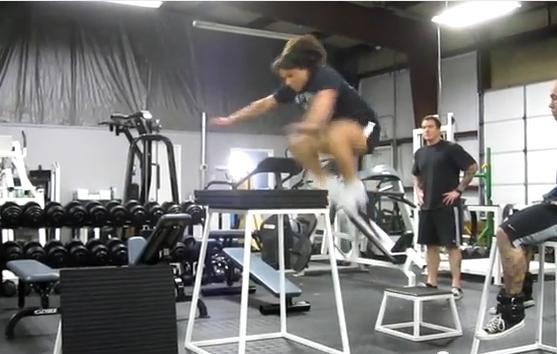
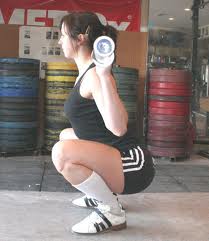
Increasing Mobility-
If you’re not flexible and mobile you will not squat very well. Squatting requires a lot of flexibility in the
hips, hamstrings, glutes and ankles. Make sure you are properly working on any flexibility or mobility issues you may have.
Tight ankles may not allow you to get low in your squat. Tight hamstrings will not allow you to sit back in your squat. Tight
hips may place extra stress on your lower back. Tight or inactive glutes will take away from your squat since the glutes are
the main pushers during a squat. Tightness or lack of mobility in any of these areas also can lead to hip knee, and or back
issues.
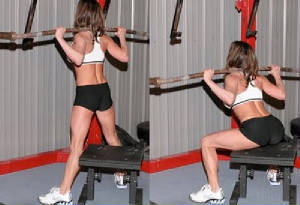
If you are not doing any mobility or flexibility work….start! If you already are doing some…..do more! Hip stretches, hamstring stretches, and glute stretching are great places to start
for flexibility. For mobility work box squatting is some of the best stuff you can do. Other good exercises to go along with
box squatting are dumbbell swings, pull thrus, adductor/abductor work, and various types of good mornings are great choices.
Totaling Things Up-
When working to increase your squat max make sure your not just getting under the bar and squatting but looking at building
a solid squatting program. Be sure to look at working your CNS, tendon strength,
what areas you’re weak in, explosiveness, and mobility. By looking at several aspects you can build a complete squat
program making you better in several areas. Once you take this well rounded approach look for your numbers to soar. You may
even improve in areas that you did not know you were weak in.
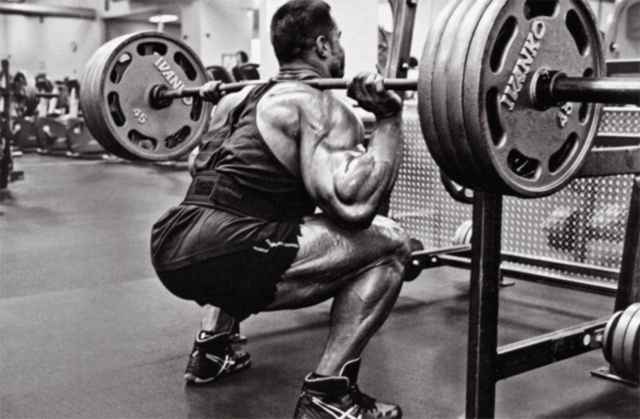
All articles on this site are authored or co-authored by Jarueba Taylor. They are the copy written
property of Taylored Nutrition. ©
1-2013
|

